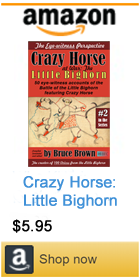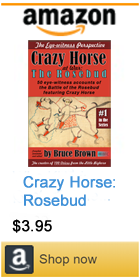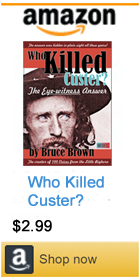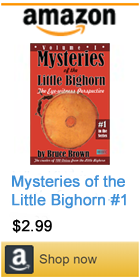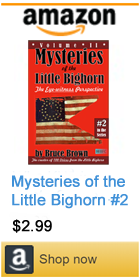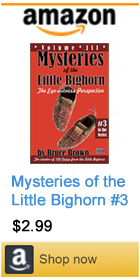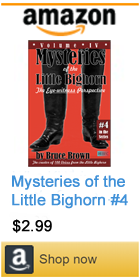|
||||||||||||
Bruce Brown's 100 Voices... Respects Nothing's Story of the Battle
RESPECTS NOTHING'S ACCOUNT
He says the Indians had no expectation that the soldiers would follow. After the fight with Crook, some of the Indian scouts went back to see what Crook's soldiers were doing, and they found that Crook was falling back, and so they did not expect any further fighting. * * * Respects Nothing and his wife, White Cow Robe, both tell me that Custer's advance was discovered in this way: Some Oglalas had started for the Red Cloud Agency. One of the number was slow in getting started and was behind. The others had gone forward, and he was following; he saw the dust rising from Custer's column, and also saw the soldiers; he went back and notified the Indians. This was on the morning the battle began. Reno crossed at the mouth of Trail Creek. When the Indian returned and gave warning of the approach of Custer there was a good deal of excitement and a rush was made for the ponies, and before the people could get out, the village was attacked. Reno crossed and came down the bottom of the river to the mouth of the Box Elder and began firing from a clump of woods at that point. The Indians left their lodges standing. The women fled down the river, toward the mouth of Chasing Creek. The women did not run back to the hills. Some warriors from all the camps went up to the head of Box Elder Creek and there attacked Reno's line and drove it down into the timber. Respects Nothing had his horses down below the Indian camps and was waiting for his horses to be brought; and when they came he went right up close to the river to the point where Reno was when he had been driven into the timber, and there is where Respects Nothing began to take part. Reno fell back and recrossed the river and ascended the hills where he made his stand. He saw the pack mules come but did not see Benteen's command. There were some soldiers between Reno's main body and the river [who] retreated up the stream to the point of Reno's crossing in retreat and most of them were killed along the river before they could cross. After Reno was up on the bluffs he was surrounded. Some of the soldiers went down to the river to get water with their hats and the Indians fired on them. They ran back to the position on the hills. Just as Reno reached the hills, Respect Nothing heard an Indian on the north side of the river, and down below a little where Reno had crossed, say that soldiers were coming down behind the ridge. * * * Custer came down on top of the ridge northeast of Water Rat Creek. He did not come to the river, or directly attempt to [do so]. He came over from that ridge [and moved] to Calhoun Hill where the battle began. The stones in the cemetery at the southeast, or rather in the line running down toward the river from Calhoun Hill, is where the battle began, and it is plain to be seen that an effort was made at that point to check the advance of the Indians, and a good many soldiers fell here. It should be said that the Indians attacking at this point had crossed the Little Big Horn at the mouth of Water Rat (or what Godfrey names in his map as Reno Creek). The soldiers came up to Calhoun Hill diagonally from the east, and the Indians came up diagonally from the river crossing to Calhoun Hill. These Indians enveloped the ridge on the north side about half way and were met by Indians who had crossed the river at the lower crossing, just below the corner of the cemetery, and [who] enveloped the ridge on the north side of the ridge after coming up the nose of the ridge to the northwest. Some Indians crossed the river above this lower crossing, probably at the mouth of the ravine. The soldiers were completely surrounded. The battle began about one o'clock p.m. and lasted till four o'clock p.m. The man who came back and gave notice that the soldiers were coming had a watch which was taken from someone of Crook's dead soldiers in the battle of the 17th of June on the Rosebud, and this watch showed the time to the Indians. Moreover, to test Respects Nothing, I took him outside the house and asked him to point where the sun stood when the battle was commenced by Reno, and he correctly indicated the quarter of the heavens where it would be at that time. Custer's line was along the ridge, but it is not clear to my mind from his statement whether Custer stopped to fight before he reached his last place; but I think that he said Custer went to that point finally and the last defenders were killed here. At any rate, he said that those were all killed at Custer Hill before those were down along the ravine. These latter, when the others were down, made a break through a narrow gap in the Indian line and ran toward the river trying to escape. They were on foot. The Indians followed them and killed them with war clubs of stone and wooden clubs, some of the latter having lance spears on them. In this pursuit one Indian stumbled into a low place, among the soldiers, and was killed by them. Respects Nothing says that the fighting with Reno was all over before Custer was engaged. Respects Nothing says that he helped drive Reno across the river, and then he galloped down to the crossing at the mouth of Water Rat, or Reno Creek, and crossed and went up and fought on the north side of the ridge and at Custer Hill. One Indian dashed right through the soldiers at Custer Hill on horseback. I have forgotten whether he said this Indian was killed, but I think he said he was killed. One soldier attempted to get away on horseback from Calhoun Hill and was a long way off when he was killed by pursuing Indians. [Note: Flying Hawk says the last pursuer was Crazy Horse.] Reno could have gone to the aid of Custer if he had moved when the Indians withdrew. They went down and attacked Custer. Why should not Reno have gone down and helped in the defense? The Indians were all fighting Reno in the first battle. Respects Nothing says the Indians took 700 guns as spoils. This must be an error. Respects Nothing is an able Indian. He made a clear map on the ground floor of Frank Galligo's new house, and by the aid of it gave a concise and clear description of all the events of the fighting. I think no white man could have given a better account. He confirmed exactly all those things which are known of these battles; and this fact is evidential that what he stated that is not known to the world, is true. He said he would tell me nothing but the facts as he knew them, and I am sure he did. He is an intelligent man. Lakota Recollections of the Custer Fight: New Sources of Indian - Military History, compiled and edited by Richard G. Hardorff, The Arthur Clark Co., Spokane, WA, 1991, p 29 -34
Respects Nothing was also known as Fearless. Frank Galligo was the translater.
|
||||||||||||



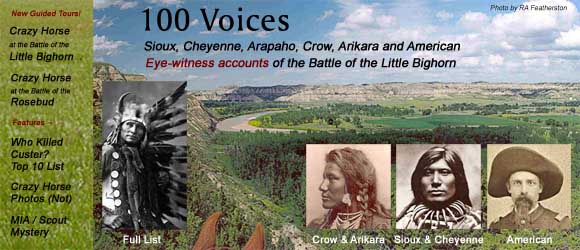
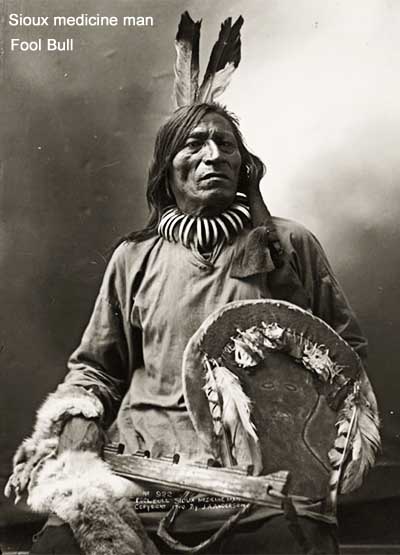 ON THE 17th of June they fought under
ON THE 17th of June they fought under 
